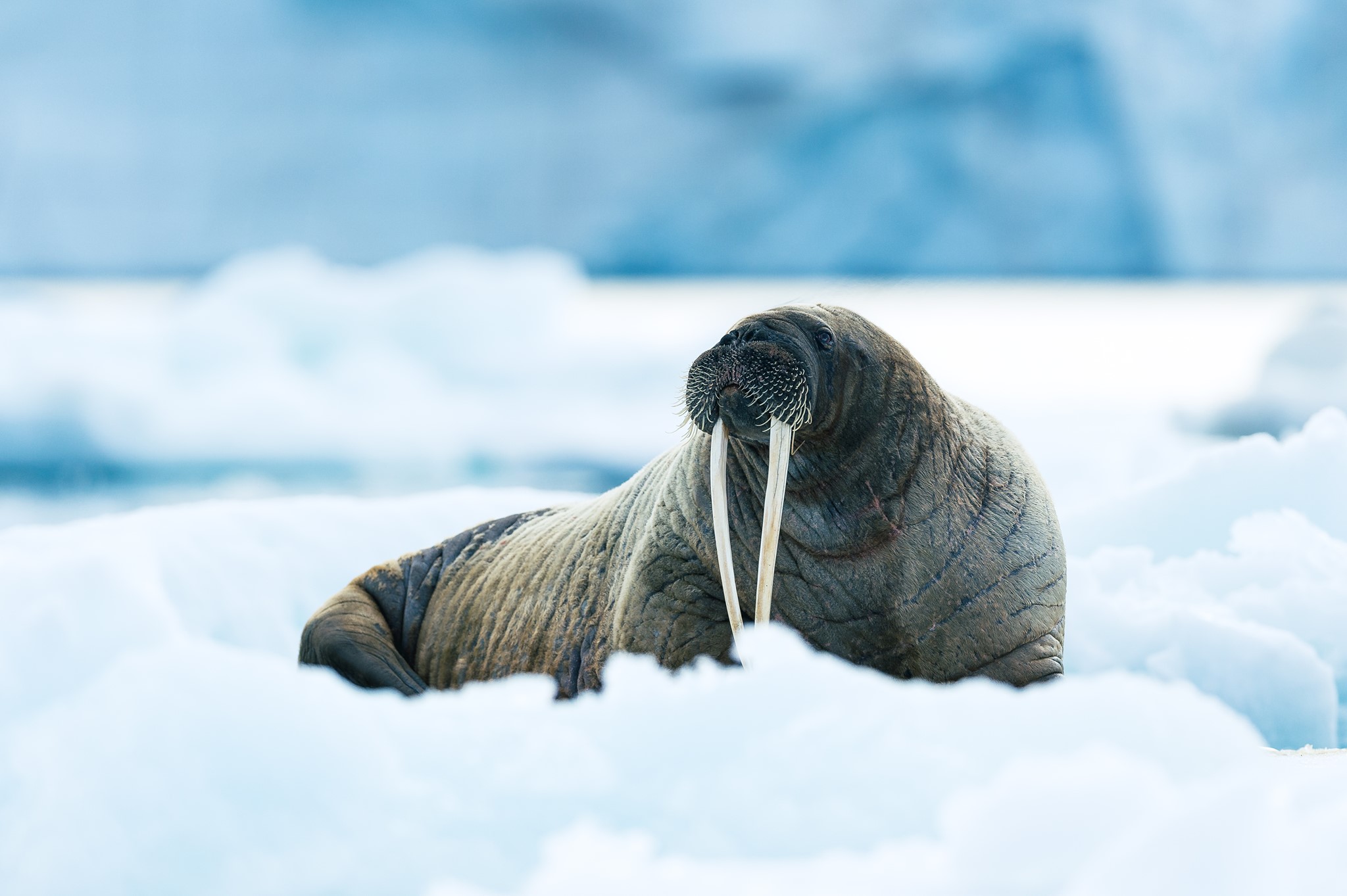
Ever wondered how Arctic animals survive in one of the harshest environments on Earth? These incredible creatures have adapted in fascinating ways to thrive in freezing temperatures, limited food supplies, and long, dark winters. From the majestic polar bear to the elusive Arctic fox, each species has unique traits that help it endure the extreme conditions. In this blog post, we'll explore 37 amazing facts about Arctic animals that highlight their resilience and ingenuity. Whether you're curious about their hunting techniques, survival strategies, or simply want to learn more about these remarkable beings, you're in for a treat. Get ready to be amazed by the wonders of Arctic wildlife!
Key Takeaways:
- Arctic animals like the Arctic fox, polar bear, and narwhal have unique adaptations to survive in the harsh environment, from changing fur colors to specialized hunting techniques.
- The Arctic is home to a diverse range of animals, from the majestic snowy owl to the resilient musk ox, each with its own fascinating characteristics and survival strategies.
Arctic Foxes
Arctic foxes are fascinating creatures adapted to survive in one of the harshest environments on Earth. Let's explore some intriguing facts about these resilient animals.
-
Arctic foxes have thick fur that changes color with the seasons. In winter, their fur is white to blend with the snow, while in summer, it turns brown or gray to match the tundra.
-
They have a keen sense of hearing, allowing them to locate prey under the snow. They can hear lemmings burrowing beneath the surface and pounce to catch them.
-
Arctic foxes are known for their incredible endurance. They can travel up to 96 miles in search of food.
-
Their diet is diverse, including small mammals, birds, fish, and even carrion. They are opportunistic feeders, eating whatever is available.
-
These foxes have a unique adaptation called "countercurrent heat exchange" in their paws, which helps minimize heat loss in freezing temperatures.
Polar Bears
Polar bears are iconic symbols of the Arctic, known for their strength and majestic presence. Here are some remarkable facts about these powerful predators.
-
Polar bears have black skin under their white fur, which helps them absorb and retain heat from the sun.
-
They are excellent swimmers, capable of swimming for days without rest. They use their large front paws to paddle through the water.
-
Polar bears primarily hunt seals, waiting by breathing holes in the ice to catch their prey. They rely on sea ice to access their food.
-
A polar bear's sense of smell is incredibly sharp. They can detect a seal nearly a mile away and beneath several feet of compacted snow.
-
Female polar bears give birth to cubs in dens made of snow and ice. The cubs are born blind and rely on their mother's milk for nourishment.
Narwhals
Narwhals, often called the "unicorns of the sea," are mysterious and captivating marine mammals. Discover some fascinating facts about these unique creatures.
-
Narwhals have a long, spiral tusk that can grow up to 10 feet in length. This tusk is actually an elongated tooth, usually found in males.
-
They use echolocation to navigate and find food in the dark, icy waters of the Arctic. Their clicks and whistles help them locate prey.
-
Narwhals primarily feed on fish, squid, and shrimp. They dive to great depths, sometimes over 1,500 meters, to find their meals.
-
These whales are social animals, often found in groups called pods. Pods can consist of anywhere from a few individuals to several dozen.
-
Narwhals have a thick layer of blubber that helps insulate them from the cold Arctic waters.
Snowy Owls
Snowy owls are majestic birds of prey that thrive in the Arctic tundra. Let's delve into some interesting facts about these beautiful owls.
-
Snowy owls have striking white plumage with dark spots, providing excellent camouflage in their snowy habitat.
-
They are one of the heaviest owl species, with females weighing up to 6.5 pounds. Their large size helps them conserve heat in cold climates.
-
Snowy owls are diurnal, meaning they are active during the day. This is unusual for owls, which are typically nocturnal.
-
Their diet mainly consists of lemmings and other small mammals. During the breeding season, a single snowy owl can consume up to 1,600 lemmings.
-
Snowy owls have excellent vision and hearing, allowing them to spot and catch prey from great distances.
Walruses
Walruses are fascinating marine mammals known for their distinctive tusks and whiskers. Here are some intriguing facts about these Arctic giants.
-
Walruses use their long tusks for various purposes, including breaking through ice, fighting, and hauling themselves out of the water.
-
They have a thick layer of blubber that provides insulation and energy reserves during times of food scarcity.
-
Walruses are social animals, often found in large groups called herds. These herds can consist of hundreds or even thousands of individuals.
-
Their diet primarily consists of clams, snails, and other bottom-dwelling invertebrates. They use their sensitive whiskers to detect prey on the ocean floor.
-
Walruses can slow their heart rate to conserve oxygen while diving. This allows them to stay underwater for extended periods, sometimes up to 30 minutes.
Arctic Hares
Arctic hares are resilient creatures adapted to survive in the extreme conditions of the Arctic. Let's uncover some fascinating facts about these hardy animals.
-
Arctic hares have thick fur that provides insulation against the cold. Their fur changes color with the seasons, turning white in winter and brown in summer.
-
They have large hind legs that allow them to hop quickly across the snow. These powerful legs help them escape predators.
-
Arctic hares are herbivores, feeding on a diet of woody plants, mosses, and lichens. During the winter, they dig through the snow to find food.
-
They are social animals, often found in groups called bands. These bands can consist of a few individuals or several dozen.
-
Arctic hares have a keen sense of smell, which helps them locate food buried under the snow.
Beluga Whales
Beluga whales, also known as "sea canaries" for their vocalizations, are captivating marine mammals. Here are some intriguing facts about these Arctic inhabitants.
-
Beluga whales have a distinctive white coloration that helps them blend in with the ice and snow of their Arctic habitat.
-
They are highly social animals, often found in pods of up to 10 individuals. These pods communicate using a variety of clicks, whistles, and chirps.
-
Belugas have a flexible neck, allowing them to turn their heads in all directions. This helps them navigate through ice-covered waters.
-
Their diet consists of fish, squid, and crustaceans. They use echolocation to find and capture their prey.
-
Beluga whales undergo seasonal migrations, traveling between their summer feeding grounds and wintering areas.
Musk Oxen
Musk oxen are robust animals well-adapted to the harsh Arctic environment. Let's explore some fascinating facts about these resilient creatures.
-
Musk oxen have a thick coat of long, shaggy hair that provides insulation against the cold. Underneath, they have a soft, woolly undercoat called qiviut.
-
They are herbivores, feeding on grasses, mosses, and lichens. During the winter, they use their hooves to dig through the snow to find food.
The Arctic's Wonders
Arctic animals are truly fascinating. From the majestic polar bear to the resilient Arctic fox, each species has unique adaptations that help them survive in one of the harshest environments on Earth. These creatures not only showcase nature's ingenuity but also highlight the importance of preserving their fragile habitats.
Understanding these animals better can inspire efforts to protect the Arctic ecosystem. Climate change poses a significant threat, and every small action counts in safeguarding these incredible species.
Next time you think about the Arctic, remember the amazing wildlife that calls it home. Their survival stories are a testament to nature's resilience and a reminder of our responsibility to protect our planet.
Learning about these animals isn't just interesting; it's a step towards appreciating and conserving the natural world. Let's cherish and protect the Arctic and its inhabitants.
Frequently Asked Questions
Was this page helpful?
Our commitment to delivering trustworthy and engaging content is at the heart of what we do. Each fact on our site is contributed by real users like you, bringing a wealth of diverse insights and information. To ensure the highest standards of accuracy and reliability, our dedicated editors meticulously review each submission. This process guarantees that the facts we share are not only fascinating but also credible. Trust in our commitment to quality and authenticity as you explore and learn with us.


